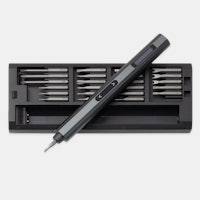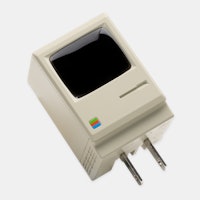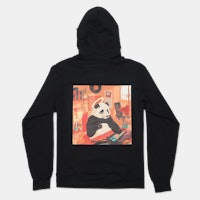Click to view our Accessibility Statement or contact us with accessibility-related questions


PRODUCTS YOU MAY LIKE
Trending Posts in More Community Picks

Graham88
Completely surprised by the lack of blade diversity here on Drop...
I’ve been a collector of Blades since before my teens, and a retailer coming up on 15… or maybe 20 years. Drop has really been kind of an interesting experience for me, because I do occasionally get to see some unusual tech and sometimes EDC items that otherwise I might not have been aware of. And maybe it’s because I have a deep love of cutlery and bladed weapons, but I find myself trolling through the site looking at it what’s available; and it’s just it’s pretty much the same. And the bladed community here is just always confused me.. every single knife is about the same, they’re almost all drop points and although the handle materials change and brands change.. it’s really just the same knife over and over and over again... occasionally you’ll see a tanto or a slight variant; but rarely… and almost never a serrated blade. And I’m just deeply amazed at this diversion of serrated blades. And I’m just surprised there isn’t more of a request for diversity here.... and I...
Mar 12, 2020
JellyDPhoto
Can we get Sony E-Mount or other mirrorless camera options please..
Would be nice to see some Sony E mount full frame cameras on here. I currently shoot with a A99 and they killed the lense path for better or more option lenses and now is all E-Mount. 🤔
Jan 13, 2020
RayF
There Are Pandas, and Then There Are Pandas.
And this isn't either of them! The Pandas we're talking about here, are watches, not bears. And what got me thinking about them (again) was a link posted this morning by @cm.rook who pointed a few of us to the very attractive (and not terribly priced) Yema "Rallygraph" Panda which, in it's most traditional arrangement, looks like the one on the left, but can also be had in the version on the right: The model on the left is a true Panda, while the model on the right is called a reverse Panda. The reason for that distinction is clear--Panda bears, only come in the first arrangement. Now at this point, everyone should be thinking about the most well-know Panda, The Rolex Panda, which is actually a Daytona, and among Rolex Daytonas, the most famous of which is the Paul Newman Daytona, which was famous first, because it was Paul's, and second because it sold at auction for $17.8 million (US Dollars). The story of that auction is well-known so I'll only...
Nov 8, 2019





The story of genuine leather is an interesting one. But it's a long one with a bunch of different facets...don't say I didn't warn you.
The idea that "Genuine is a grade of leather (the 2nd worse one)" is the biggest 'leather myth" on the internet today. Simply put it just means real. A distinguisher from synthetic. It shouldn't be taken to mean "good" or "bad."
Let's get into how "genuine always=bad" came to be and why it's still wrong: So back in the day "Genuine Leather" got stamped on all sorts of "good" leather goods. Here's a packaging tag from my company from the 70's and 80's It was a selling point, but as cheap imported goods got more and more common, less than honest companies asked themselves "what's the cheapest leather that's still technically 'genuine'?" Enter: The finished split. A finished split is basically suede that's covered in either a sheet or PU or a heavy pigment layer. The goal is to make suede look like top/full grain: smooth. The problem with this is that it's the equivalent of trying to make a smooth dance floor by painting or laying vinyl flooring over shag carpet. With use the outer layer breaks down and you have a mess. Cheap leather goods manufacturers started stamping "Genuine Leather" on things made with finished splits to the extent that much of the leather goods you'd find would be low quality and stamped "genuine leather"...you have to remember this was the 80's and 90's people were not as willing back then to drop $50 or $100 on a wallet like today, you just couldn't find very many quality leather goods outside of smaller makers.
One take home from what happened with genuine leather is that unethical manufactures/tanneries will take whatever buzzword is taken by people as the shortcut for quality and capitalize on it. For example: full grain just means "nothing has been done to alter the outer grain" that means a tannery can actually do less to a leather and it's still "technically full grain." Which is why you can't count on "full grain" alone to be a sign of quality.
There are many exceptions to the "Genuine=Bad" rule. The biggest one is Red Wing Heritage. They're stamping "Genuine Leather" on the veg-tan sole of Beckmans and other shoes. They are using it "Genuinely" just to mean real. I've also noticed that many global and European brands also use it: $3000 Dior Homme Leather Jackets, Article Furniture uses genuine in it's short descriptions for their full grain aniline Italian leather. Apple's "official" cases are decent leather but are called "Genuine Leather" in the descriptions. Search "Genuine Leather" on Kickstarter and you'll notice that many projects that are obviously using decent leather from France, Spain, Italy and other parts of Europe use it to describe what they use (probably just a translation thing.)
The origin of Genuine (and the rest of these terms) as grades
Calling genuine leather a grade of leather is probably one of the worst misconceptions to plague my industry. It's forced my Dad, a 70 leatherworker who's worked with leather most of his life, to have to take it out of his vocabulary when he talks to uninformed customers. Many smaller leather companies, my own included, have had to remove the word from our websites for fear of people getting confused.
This all started with a video and related article where a big leather goods manufacture broke down some "grades of leather" in a very slanted and misleading way. This video went viral. These "facts" got repeated everywhere and now several times a week someone here on Reddit says "genuine is the second worst grade of leather." Some newer companies have even repeated this nonsense breakdown in their product descriptions. Genuine has never been a grade, you can't call up a butcher and ask for just real beef. You can't call up a tannery and ask for "genuine leather" the term is just too broad, there are so many other words used in our industry to describe leather.
This entire "grading system" isn't used by any government, majory tannery trade group, or regulating authority anywhere: it is completely made up.
So was this misrepresentation of facts on purpose?
You bet ya. If these articles had simply said “genuine sometimes means”, I’d have no problem, but they go so far as to claim it’s some sort if secret “industry term” which is wrong. Industry terms are specific; sometimes so specific that they aren't understood by those outside the industry. Genuine leather is such a broad term and that it's useless as a specific descriptor. So it’s hard to see those statements as anything but a malicious misrepresentation of facts to pump up the product. It caught on because it's got this "click-baity", you think it means 'x' but it really means this ring to it. Kind of like the "USA is a city in Japan" urban legend Lastly, I'll tell you: I get weekly emails from less expensive tanneries all the time and they never use the word genuine. They use real, full grain, veg-tan...plus a whole bunch of real industry terms that I won't get into here.
Horween uses "full grain" for Chromexcel, Dublin, Derby, and their glove leathers, but not for their ball leathers or Cordovan. So there is some sort of division between full-grain and non-full grain.
https://www.horween.com/tannages/ (first vertical column after the stub is for the Full Grain check)
Here is their glossary:
"Full Grain: Leather that has its surface left completely intact, showing all natural characteristics of the hide."
https://www.horween.com/glossary/
I've long said that when you're talking about a "good" tannery like Horween or SB Foot, that full grain vs not full grain can be mostly a matter of taste as opposed to durability and even cost (Horween's "not full grain" leathers aren't significantly cheaper).
I love Horween's tannage page but it does show that there's plenty of good quality leather that's not technically full grain. One that I've worked with that I'd say is as good as CXL is Cavalier, if nobody told you, you wouldn't know that its had any "correction." Also if you check out Horween's tannery row page (http://www.thetanneryrow.com/the-leathers) , they've changed a little on the CXL description: They say it's "Lightly Corrected"!!!! I still love CXL but it goes to show you that "full grain" isn't nearly as important as some people make it out to be.